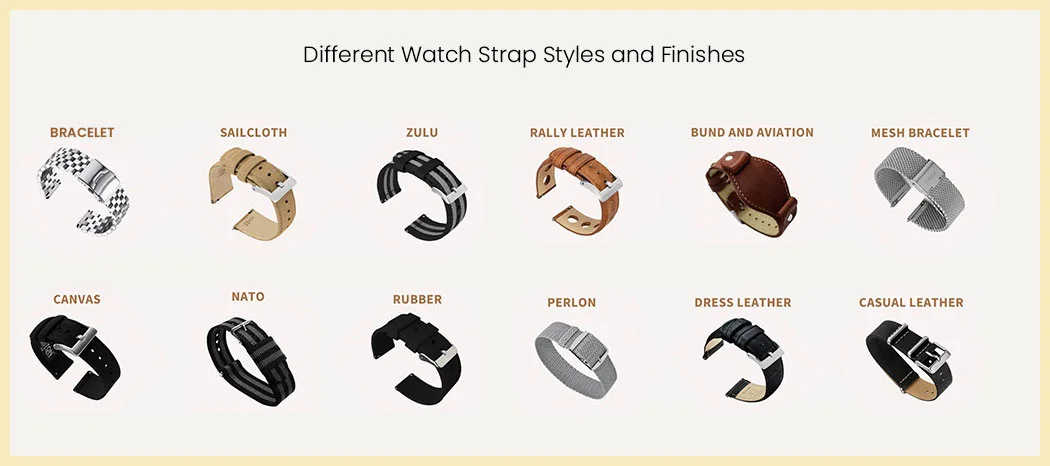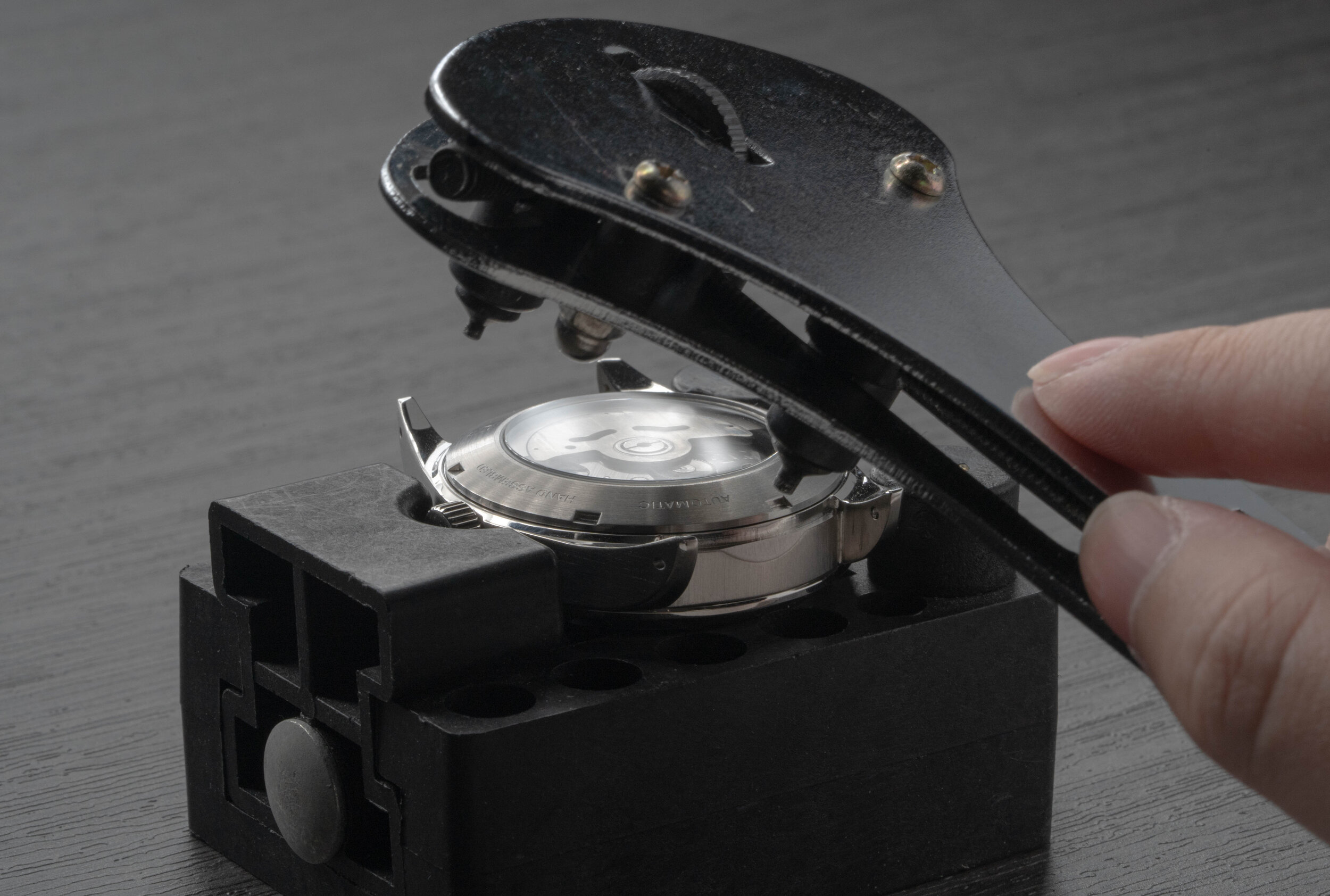a blasé exposé about watches
I think watches are cool, and in this brief article, I'll tell you about them.
1 – the watch
Everybody knows what a watch is, but do they know how they work? Maybe, anyways:
anatomy
A watch is composed of parts, here they are:
 front and back of a watch
front and back of a watch
movement
The movement is the engine of the watch. It can run on many types of fuel like batteries, solar, movement, or winding.
When it's operated by a battery or solar it's a quartz movement, when it's winding (a spring inside the movement) it's mechanical. Automatic means it's self-winding by a rotor. Some people use mechanical and automatic interchangeably.
complications
A complication in a watch is anything that is extra on top of telling time and is part of the movement. Different markings on the bezel don't count. The most common complications are a chronograph, a date and/or day window. Less common are moon phases, month window, power reserve indicator, world timer and alarms. Those are self-explanatory.
Others like small seconds needs explaining. Basically, the seconds hand has its own tiny sub-dial and rotates in it. You also have more fun complications like GMT — it's an extra hand that tells you the hour of another time zone. Coupled with a rotating bezel, watches with a GMT complication can keep track of 3 time zones at the same time. It's pretty cool. It's my favourite complication right now. There are others, but those are the main ones. There are also different types of each, you can have various flavours of chronographs for example.
design – types of watches
There are many designs for watches, but a lot of them fit the same broad vibe. There is overlap of course. Anyways, here are the main ones, I think:
Diver watches – it's for divers. They're usually bulky, water-resistant for 100s of meters, durable, highly legible and glow in the dark. I like them a lot:

Dress watches – it's for special occasions. Despite the name it also works with suits. They're usually slimmer, simpler, the dials can be more colourful and intricate but overall the watch is going for an understated vibe:

Racing watches – it's for timecels. They usually have a chronograph, small seconds and a tachymètre. The tachymètre is a marking on the bezel allowing you to tell how fast things are going when used with the chronograph:

Pilot watches – you guessed it. They're either highly legible or completely schizo, no in-between:

Field watches – They're for the “field”. More nebulous, basically they're very simple, highly legible and durable. They usually have 24h markings and sometimes a compass bezel:

Novelty – anything goes:

design – uh, other stuff
It's design again. Watches have different shapes, but round is obviously the most common. They also have different sizes, with men's watches being in general bigger than women's. The apparent size of a watch is mostly dictated by the case diameter, and the lug to lug distance (how tall the watch is). But also, thickness can be important.
For the main body of the watch, many materials can be used. For the case, plastic, stainless steel, gold and titanium are common. There are different grades for each material. Other materials are used too, more rarely.
If the bracelet/strap is metal, the material usually follows the case material. Otherwise you can have metal, rubber, textile, leather... bracelets/straps. Honestly, there is a lot of personalisation available with them. There's different clasp mechanisms for each, but they're not exclusive to any material. There are different styles for each as well, like metal has oyster and jubilee bracelets:
Recently, I've been rocking with the nato strap (and I hope it's been rocking with me too.)

For the “crystal”, obviously we don't want to use glass, because it would shatter instantly. Acrylic glass (plexiglass), mineral glass and sapphire glass are most often used. Out of those three, acrylic is the least scratch-resistant, and sapphire the most. But then sapphire is the least shock absorbent out of the three. There's trade-offs for each. This leads us to general care tips.
general care tips
Here are some general care tips:
modern watches are not super fragile, you don't need to baby them. Obviously don't bang'em hard or drop them from heights. Just don't be careless
if you're changing the time, date, or winding your watch, take it off your wrist first
don't change the time/press pushers while you're in the pool or the ocean. the sea is also a no-no
don't over-wind your watch, if you can't turn the thing anymore, it means you should stop. duh
there's precise moving metal pieces in watches, they don't like strong magnets
try not to change the day/date around midnight, it could be strenuous(big word) for the movement. If you have to, do it before 10pm and after 2am.
2 – watch world
There's a whole world around watches, they don't appear out of thin air.
the brands
Just like with everything a couple of brands own everything, but you also have a couple independents that are holding strong:

Don't get too wrapped up in brands, if the watch is good quality and the price is right, it doesn't matter what's written on the dial. Actually, I guess slave labour is not cool so maybe look into the brand a bit.
the people
Since watches can be expensive, it can attract the worst crowd. There are lots of snobs and influencers, therefore the gatekeeping and manufactured hype/hate are there too. There's also a ton of rich people that think that because they can afford expensive watches it makes them connoisseurs. They're wrong.
3 – watches and me
watches and me I guess
When I was a kid I had no money, but I had a dinosaur watch, which is infinitely cooler. In middle/high school I got my parents to buy me a cheap steel watch. In university, I had negative money, but I watched some watch content. My dad who was also a watch enthusiast gifted me watches for some birthdays. (he's still alive but he got a rolex now). Youtube recommended me some watch videos recently and I got back into it. Now I have money, but I also have bills. However I started a second job. I was gonna put all that new money into watches, but my cat got constipated and the vet's expensive.
 constipated cat
constipated cat
changing batteries
Most of the watches I own I've had for 5+years. Some even for 10. Almost all are quartz (i.e. they need batteries). Watch batteries die in about 4-5 years depending on the watch. I went to a clock place in late 2021 and I had them all changed, but I guess they gave me shit batteries cause they all died in 2023. At one point I had no functioning watch in my collection.
When I got back into watches this year, I decided I should probably have functioning ones. I wanted to change the batteries myself, cause it's way cheaper.
Opening them up was annoying, but usually once opened it was fine. There is multiple possible mechanism to open/close a watch case. You can have screws, have a screw-in back, or just pressed-on. They can all be kinda tricky. Anyways, now I have working watches.
 i had to put something here, I guess
i had to put something here, I guess
why I think watches are cool
There are so many reasons why watches are cool. What's even cooler, is that the answer to why watches are cool depends on who you ask. There are so many flavours of coolness. Watches are such tiny things and yet have such depth that you have people nerding-out about different aspects. Some are movement nerds, some are design nerds, others are manufacturing nerd, watch history nerd, brand history nerds...
But this is my exposé so I guess you are stuck with what I think makes watches cool.
The fact that watches are made to last not only years, but even decades, in a world where everything's life cycle is getting shorter and shorter, is really cool. Just to think that the watch I'm wearing today could be passed down to my great-grand kids is so cool.
The tech is also really cool, how we use all those teeny-tiny gears and parts, and a simple spring, to make a functioning mini-clock that can even rewind itself is incredible. Some complications like perpetual calendar — where the day, date, month are displayed and never need adjusting (yes, even for leap years) — are also so impressive and cool.
Then they look good. There are so many designs, some classic, some more out there, but a lot of them look cool. You can style it with your clothes, you can have the watch standing out from your outfit — even looking at them on their own is great. From dial, case, bracelet... there is a lot to appreciate visually, and it's cool.
Jacques Cousteau and his trusty black-dialed Doxa
Finally, it's cool to think about watches in the past, as indispensable tools. Before everyone had a tiny computer in their pockets, you could only tell time with a watch, a clock or counting the bells from the church. It is hard to carry a clock around (and even harder to carry a church) so if you were out and about, a watch was your only way of telling time. But at the same time, for some professions, being able to tell time was a life or death thing. You have a secret operation that depends on coordination with your team; better synchronise your watches. You're a pilot an only have fuel for another 40min; you better know when that is. You're a diver and have to decompress for 10min before you're allowed to surface; you need to be able to tell the time if you don't wanna get the bends. Thinking about watches as tools in the olden days is really fascinating. (and cool)
conclusion – random advice
Here are my parting words of wisdom:
- at the end of the day you have to embrace the dings and scratches
- maybe don't buy a ton of cheaper watches instead of a few cool more expensive ones that you will always wear
- remember that watches are meant to last you a lifetime; buy them responsibly. do you see yourself liking that watch in 5, 10, 20 or 50 years?
- ebay is your worst enemy. yes vintage watches are cool and sometime affordable, but do you really need 20?
- be careful with what you like, and what suits you. it doesn't always match up
- getting into watches is a personal journey, don't listen to people. including me. and all of the above
“cool” counter:21 most illustrations were shamelessly stolen from the web